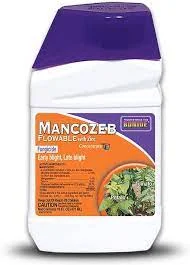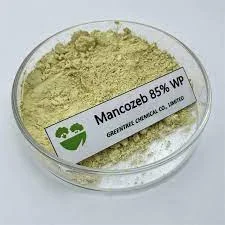Soil sterilization is a common practice in agriculture and horticulture to control soil-borne diseases and pests. It involves the elimination of harmful pathogens, weeds, and pests from the soil to create a clean and healthy environment for plant growth. Various methods and chemicals are used for soil sterilization, but one question often arises: Can mancozeb be used for soil sterilization? In this article, we will explore the properties of mancozeb, its effectiveness in soil sterilization, and potential considerations.
I. Understanding Mancozeb
Before delving into its suitability for soil sterilization, let's understand what mancozeb is and how it works.
1.What is Mancozeb?
Mancozeb is a widely used fungicide and bactericide that belongs to the dithiocarbamate group. It is a combination of two active ingredients, ethylene bisdithiocarbamate (EBDC) and zinc ion. Mancozeb is available in various formulations such as wettable powders, dusts, and liquid concentrates.
2.Mode of Action:
Mancozeb acts by inhibiting the respiration process in fungi and bacteria, disrupting their metabolic activities and preventing their growth and reproduction. It is effective against a broad spectrum of pathogens, including fungi, bacteria, and some nematodes.

II. Mancozeb for Soil Sterilization
While mancozeb is primarily used as a foliar spray and seed treatment, its potential for soil sterilization has been a topic of interest. Let's explore its effectiveness and considerations for using mancozeb in soil sterilization.
1.Antifungal Properties:
Mancozeb's primary role is to control fungal diseases, making it effective against soil-borne pathogens. When applied to the soil, it can help suppress fungal populations responsible for diseases like damping-off, root rot, and wilt. However, its effectiveness may vary depending on the specific pathogens present in the soil.
2.Limited Efficacy on Soil Pests:
While mancozeb can control some nematodes and bacteria, its main strength lies in its antifungal properties. It may have limited efficacy against soil pests such as nematodes, insects, and weeds. Therefore, it may not be the most suitable option for soil sterilization if the primary concern is pests rather than fungal diseases.
III. Considerations and Limitations
There are several factors to consider when contemplating the use of mancozeb for soil sterilization.
1.Environmental Impact:
Mancozeb is classified as moderately toxic to humans and animals, and its use requires strict adherence to safety guidelines. It is important to consider the potential environmental impact of mancozeb, including its persistence in the soil and its potential runoff into water bodies. Local regulations and restrictions on the use of mancozeb should also be taken into account.
2.Residual Effects:
Mancozeb has a relatively short residual effect in the soil, meaning its effectiveness decreases over time. As a result, repeated applications may be necessary for long-term soil sterilization, which can increase the overall cost and potential environmental impact.
3.Integrated Pest Management:
Soil sterilization should be viewed as a component of integrated pest management (IPM) rather than a standalone solution. IPM emphasizes the use of multiple strategies to control pests and diseases, including cultural practices, biological controls, and chemical interventions. Incorporating mancozeb into an overall IPM plan can enhance its effectiveness in soil sterilization.

Conclusion
While mancozeb is primarily known for its antifungal properties, its effectiveness for soil sterilization has its limitations and considerations. It can be a valuable tool for suppressing fungal diseases in the soil, but may not be the most suitable option for controlling soil pests. Before using mancozeb for soil sterilization, it is important to assess the specific soil conditions, target pathogens, environmental impact, and adhere to safety guidelines. Integrated pest management should be employed to maximize the effectiveness of mancozeb and ensure a holistic approach to soil sterilization.
